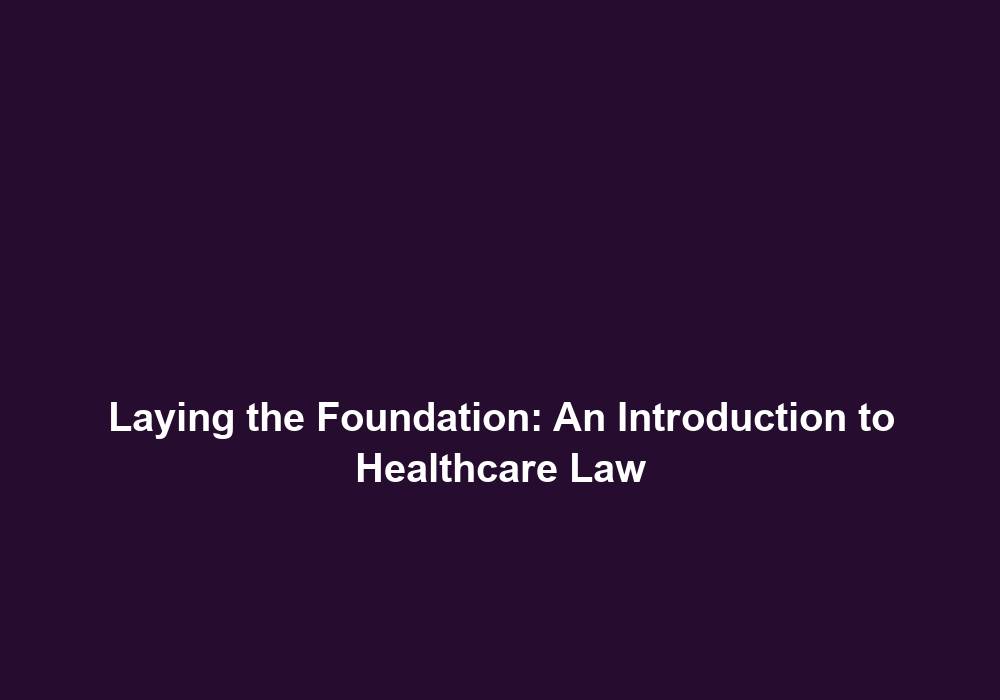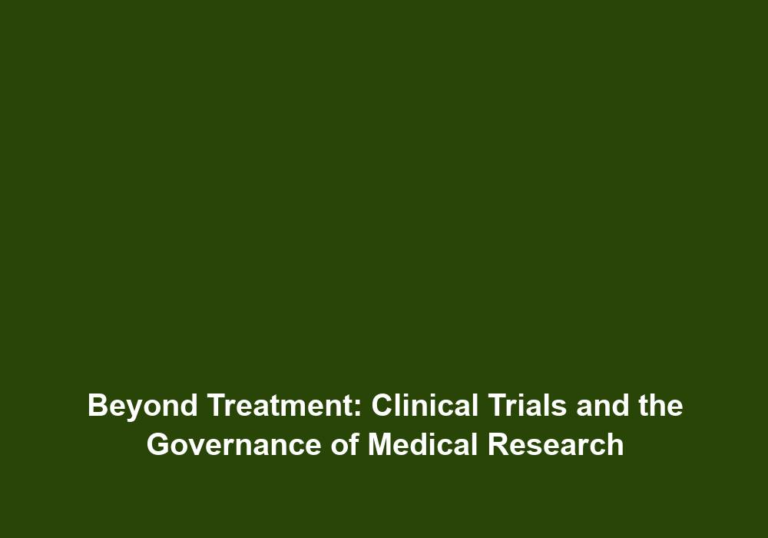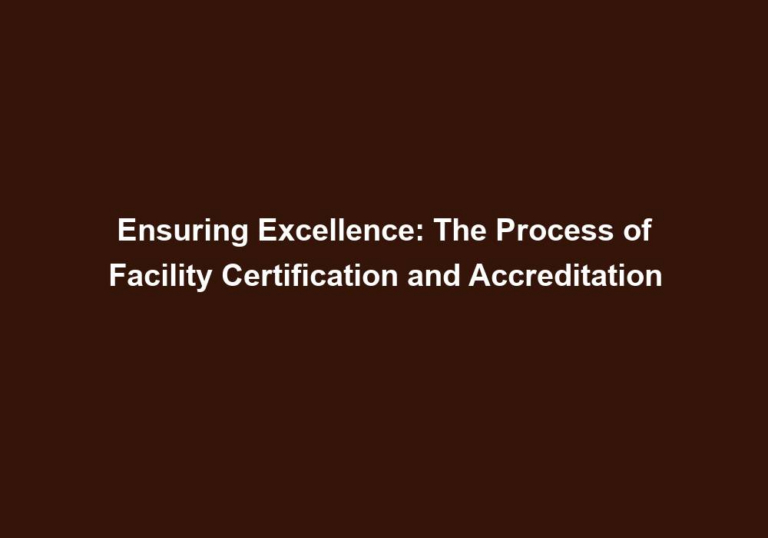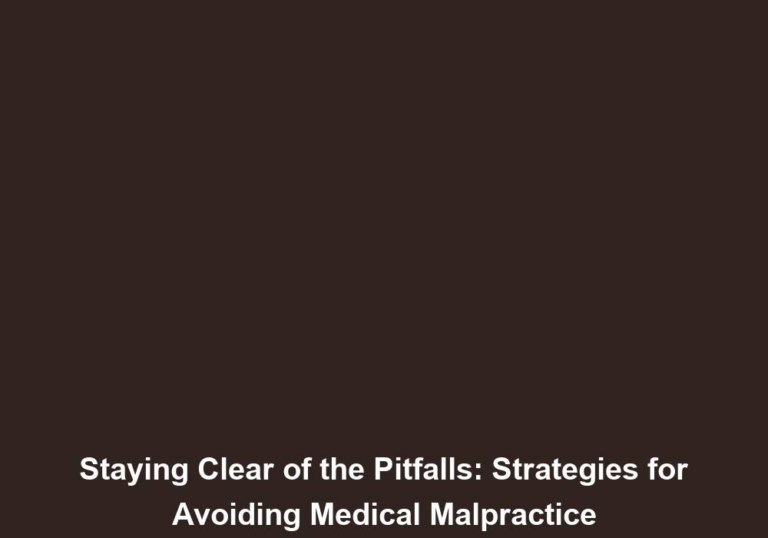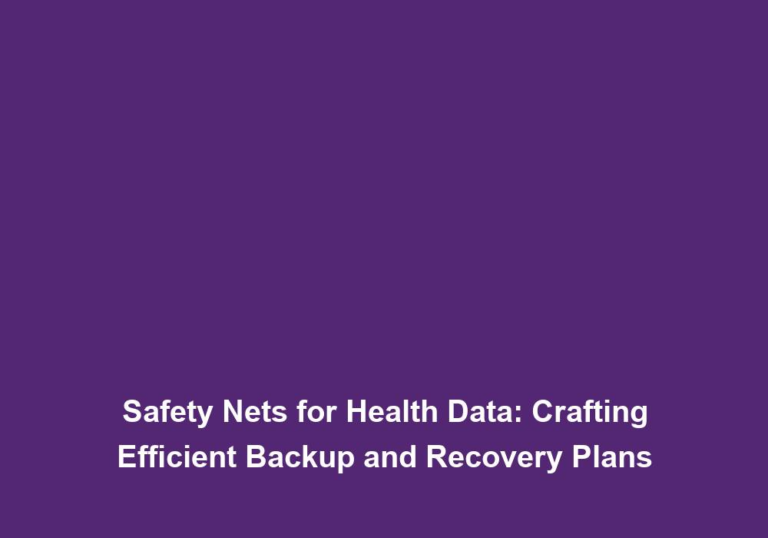From Policy to Practice: Navigating Healthcare Compliance and Regulations
In the constantly evolving world of healthcare, staying compliant with regulations and policies is of utmost importance. Healthcare organizations are required to adhere to a myriad of laws and regulations to ensure the safety and well-being of patients while also avoiding legal and financial repercussions. Navigating through these complex compliance requirements can be challenging, but with the right knowledge and strategies, healthcare professionals can effectively manage compliance and provide high-quality care to their patients.
Understanding Healthcare Compliance
Healthcare compliance refers to the adherence of healthcare organizations to laws, regulations, and guidelines set forth by regulatory bodies such as the government, accreditation agencies, and professional associations. These regulations aim to ensure patient safety, protect patient privacy and confidentiality, prevent fraud and abuse, and maintain the overall integrity of the healthcare system.
Compliance with healthcare regulations is not only a legal requirement but also essential for providing quality care. By following these regulations, healthcare organizations can create a safe and trustworthy environment for their patients. It helps in minimizing medical errors, infections, and other adverse events that may harm patients. Compliance also ensures that healthcare facilities meet the standards of care expected by regulatory bodies, which ultimately leads to better patient outcomes.
The Importance of Healthcare Compliance
Compliance with healthcare regulations is crucial for several reasons:
-
Patient Safety: Compliance helps ensure that healthcare facilities maintain high standards of care, reducing the risk of medical errors, infections, and other adverse events that might harm patients. It involves implementing protocols and processes that prioritize patient safety at every level of healthcare delivery.
-
Legal and Financial Consequences: Failure to comply with healthcare regulations can result in severe penalties, fines, legal actions, loss of accreditation, and reputational damage. Non-compliance can lead to lawsuits and legal disputes, causing significant financial strain on healthcare organizations. Additionally, loss of accreditation can limit a healthcare organization’s ability to provide services and receive reimbursement from insurance providers.
-
Trust and Reputation: Compliant healthcare organizations inspire trust and confidence among patients, who seek healthcare services from providers they can trust. By adhering to regulations, healthcare organizations demonstrate their commitment to patient well-being and ethical practices. This enhances their reputation and can attract more patients, leading to business growth and success.
-
Data Security and Privacy: Compliance with regulations such as the Health Insurance Portability and Accountability Act (HIPAA) ensures the protection of patient health information, guarding against data breaches and unauthorized access. Healthcare organizations are responsible for implementing safeguards to protect patient records, securing electronic exchange of health information, and obtaining patient consent for certain uses and disclosures of their health information. By prioritizing data security and privacy, healthcare organizations can build trust with patients and maintain the confidentiality of sensitive information.
Key Healthcare Regulations
To better navigate healthcare compliance, it is essential to have a thorough understanding of some key regulations that impact the industry. Here are a few regulations that healthcare professionals should be familiar with:
1. Health Insurance Portability and Accountability Act (HIPAA)
HIPAA was enacted to protect patients’ health information and ensure privacy and security in healthcare. It establishes standards for the electronic exchange, privacy, and security of health information. Compliance with HIPAA includes implementing safeguards to protect patient records, providing patients with notice of privacy practices, and obtaining patient consent for certain uses and disclosures of their health information.
2. Affordable Care Act (ACA)
The ACA introduced significant changes to the healthcare system in the United States, aiming to improve access to affordable healthcare. Compliance with ACA involves understanding and implementing provisions related to insurance coverage, healthcare exchanges, Medicaid expansion, and preventive care services. Healthcare organizations must stay updated with the latest changes to ACA regulations to ensure compliance and eligibility for reimbursement.
3. Medicare and Medicaid Regulations
Medicare and Medicaid are federal healthcare programs that provide coverage for specific populations. Compliance with Medicare and Medicaid regulations includes understanding eligibility criteria, billing and coding requirements, documentation standards, and fraud and abuse prevention measures. Healthcare organizations that participate in these programs must adhere to strict guidelines to ensure proper utilization of resources and prevent fraudulent activities.
4. Occupational Safety and Health Administration (OSHA) Standards
OSHA sets workplace safety and health standards to protect employees in various industries, including healthcare. Compliance with OSHA standards involves implementing safety protocols, providing appropriate training, and maintaining a safe work environment to prevent injuries and occupational hazards. Healthcare organizations must prioritize the well-being of their employees and take necessary measures to ensure a safe workplace.
5. Food and Drug Administration (FDA) Regulations
The FDA regulates the safety and effectiveness of medical devices, drugs, and food products. Compliance with FDA regulations entails meeting requirements for product approval, labeling, manufacturing practices, and post-market surveillance. Healthcare organizations involved in the development, manufacturing, or distribution of medical devices, drugs, or food products must adhere to FDA regulations to ensure the safety and efficacy of these products.
Strategies for Effective Healthcare Compliance
Navigating healthcare compliance can be overwhelming, but incorporating the following strategies can help healthcare professionals stay on track:
1. Develop a Compliance Program
Establishing a comprehensive compliance program tailored to the specific needs of a healthcare organization is a crucial step. The program should include policies, procedures, and protocols that guide employees on compliance requirements, reporting mechanisms for potential violations, and ongoing training to ensure understanding and adherence to regulations. It is essential to customize the compliance program to address the unique challenges and risks faced by the organization.
2. Stay Informed and Updated
Regulations and compliance requirements are constantly evolving. It is essential to stay informed about the latest changes, updates, and best practices in healthcare compliance. This can be achieved by regularly reviewing regulatory websites, attending conferences, participating in training programs, and engaging with professional associations and networks. Healthcare professionals must allocate dedicated time and resources to stay up-to-date with regulatory changes and industry trends.
3. Conduct Regular Audits and Assessments
Performing regular internal audits and assessments helps identify areas of non-compliance and potential risks. This allows healthcare organizations to take corrective actions promptly and implement measures to mitigate future compliance issues. Audits can be conducted by internal compliance teams or external consultants who specialize in healthcare compliance. The findings from audits should be used to improve processes, address deficiencies, and enhance overall compliance efforts.
4. Foster a Culture of Compliance
Promoting a culture of compliance is essential for ensuring that all employees understand the importance of adhering to regulations. This can be achieved through ongoing education and training, open communication, and setting examples of ethical behavior. Healthcare organizations should create a supportive environment where employees feel comfortable reporting potential compliance concerns without fear of retaliation. By fostering a culture of compliance, healthcare organizations can create a shared responsibility for regulatory compliance among all staff members.
5. Utilize Technology Solutions
Leveraging technology solutions such as electronic health records (EHRs), compliance management software, and automated processes can streamline compliance efforts and improve accuracy and efficiency in meeting regulatory requirements. EHRs can help healthcare organizations securely store and manage patient health information, ensuring compliance with HIPAA regulations. Compliance management software can automate compliance tasks, track regulatory changes, and provide real-time monitoring of compliance activities. By embracing technology, healthcare organizations can enhance their ability to meet compliance requirements and reduce the administrative burden associated with manual processes.
Conclusion
Healthcare compliance and regulations play a vital role in ensuring patient safety, maintaining the integrity of the healthcare system, and protecting healthcare organizations from legal and financial consequences. By understanding key regulations, implementing effective compliance strategies, and fostering a culture of compliance, healthcare professionals can navigate the complexities of healthcare compliance and provide high-quality care to their patients while maintaining legal and ethical standards. It is crucial for healthcare organizations to prioritize compliance efforts and allocate dedicated resources to stay updated with regulatory changes. By doing so, healthcare professionals can contribute to a safer and more trustworthy healthcare environment.

